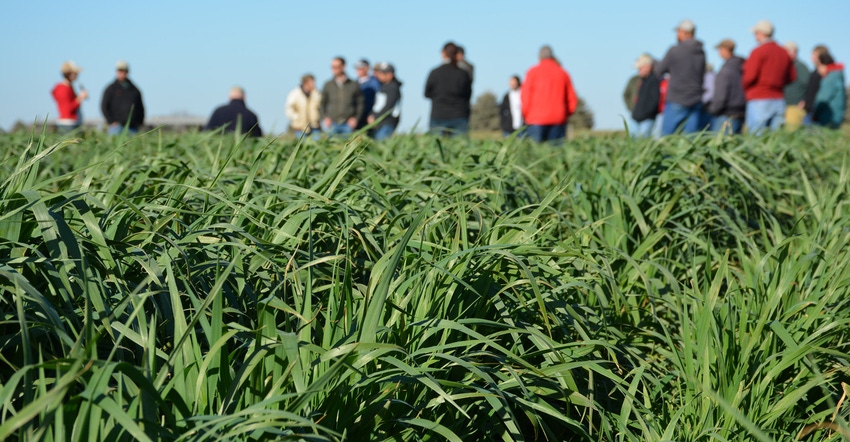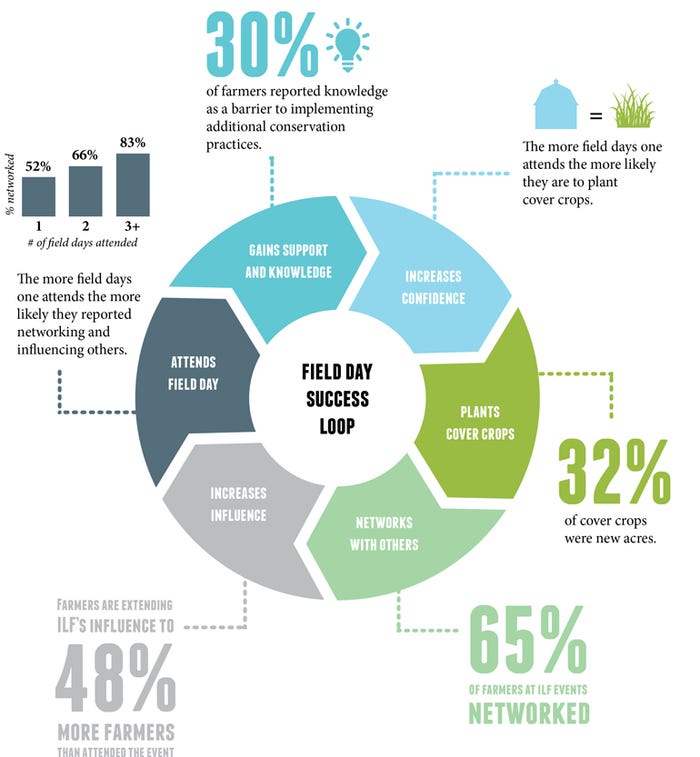March 14, 2017

By Jacqueline Comito and Liz Juchems
The newly released Iowa Learning Farms 2016 Field Day Evaluation Report shows cover crop acres in Iowa grew by about 623,700 acres, or 32%. While the positive growth with shrinking profit margins is encouraging, the rate of growth was 3% slower than the growth measured the year before, and still well below the goal of 12.5 million acres called for in Iowa’s Nutrient Reduction Strategy.
Iowa Learning Farms sponsored 30 conservation field days and workshops in 2016 on cover crops, strip tillage, saturated buffers, prairie strips and more. These events drew 1,510 people, primarily farmers and landowners (89%). Of ILF field day attendees, 27% were female.
In January, farmers and landowners who attended ILF field days were mailed an evaluation questionnaire to investigate whether they made changes to their farming practices. In a one-month period, 281 evaluations were returned, a 40% response rate.
Growth in cover crop acres came from both first-time and experienced users. Most respondents (69%) started seeding cover crops at least three years ago and have an average of five years of experience with cover crops. Examining the percentage of their row crop acres seeded to cover crops, there was a steady increase corresponding to years of cover crop experience.

As experience with cover crops increased, concerns about yield impacts and implementation knowledge decreased. This is consistent with findings from the longest-running on-farm cover crop research and demonstration project in the state. After eight years, a properly managed cereal rye cover crop had little-to-no negative effect on corn and soybean yield, and actually increased soybean yield in seven site-years and corn yield in two site-years.
Cost-share funding effective
Cost was identified as the biggest barrier to cover crop adoption for the third straight year. Cost-share funding continued to be a driver as about 61% of cover crop farmers reported using cost-share, representing 73% of the overall reported cover crops acres (up 3% from 2015). Cost-share was used to plant 82% of the acres for farmers who reported cover crop usage for three years. As these cost-share contracts expire in coming years, we could experience an even larger slowdown in cover crop adoption. While cost-share can help lower the risk of adopting a new practice, it is not a sustainable tool in the long term to voluntarily meet Iowa’s Nutrient Reduction Strategy goals.
Field days continue to play an important role in nurturing a voluntary approach to conservation. ILF’s evaluation findings show that attending multiple conservation field days increases both conservation practice adoption and networking effectiveness with other farmers and landowners. Through farmer-to-farmer networking, ILF’s influence was extended to 48% more farmers than attended ILF events. The full ILF 2016 Field Day Evaluation Report is at iowalearningfarms.org.
Comito is program director and Juchems is events coordinator for ILF. Iowa Learning Farms’ vision is to build a “culture of conservation,” where Iowa farmers and other stakeholders learn and exchange ideas.
You May Also Like




